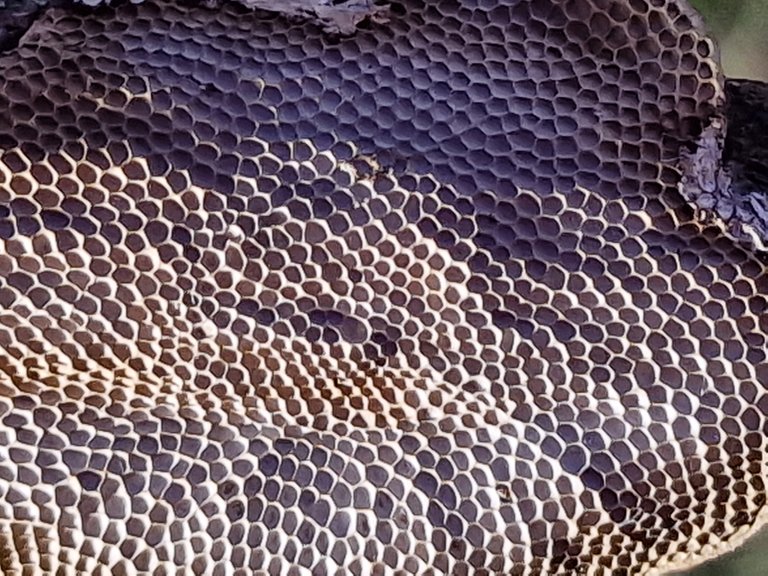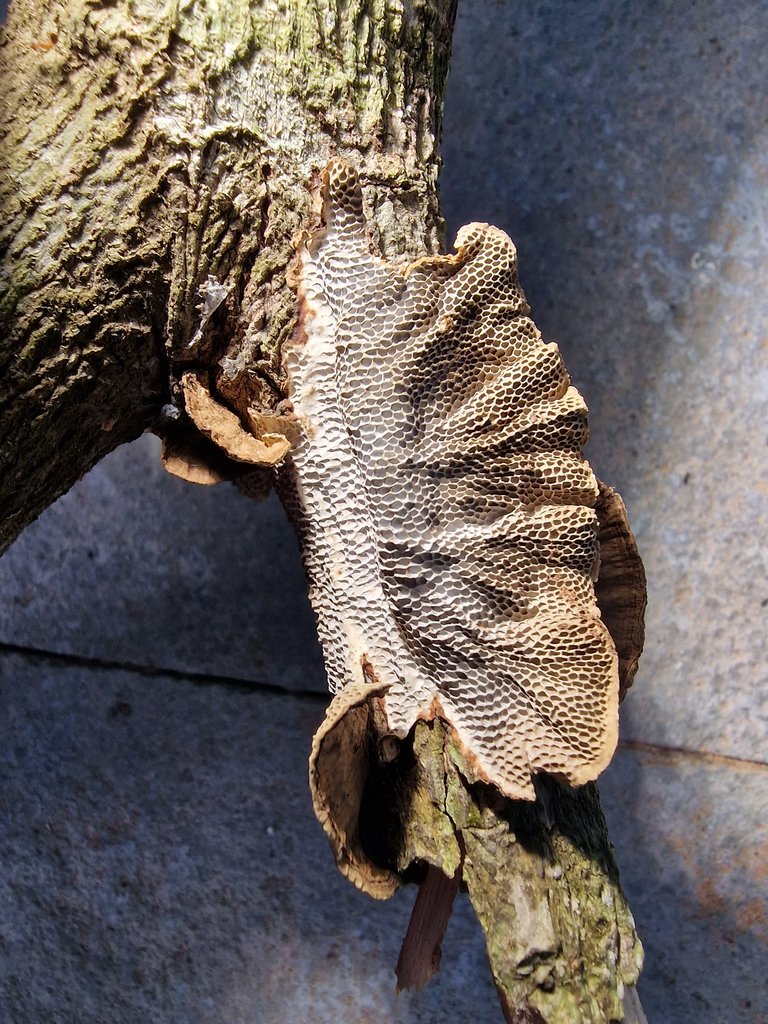
here is my contribution to #FungiFriday by @ewkaw

in post after post i have extolled the wonders of fungi in Norway. whether in forest or field, there are countless species and the more i learn about them the more fascinated i become. from delicious to fatal or just plain inedible they are all beautiful lifeforms essential to the ecology of their respective ecosystems.

but some have a dark side. very dark. they are killers. in nature it is easy to accept their role as parasites because they fulfil important roles as decomposers, breaking down organic matter such as wood and plant cells making organic matter available for new growth. that's all wonderful in nature.

here in our garden in India it is a very different story. these fungi are killing our trees. mostly the cashew trees but also to a lesser extent the sapodilla trees. here they are not wonderful beautiful little darlings that i look forward to seeing. far from it, i have to cut away dead and half dead branches each year just to save the trees. even still some trees have already died and more are dying, first slowly then very quickly.

i haven't positively identified these fungi and it may be a saprophyte, that they only attack the branches that are already dead from another fungal disease. i think it is dieback Corticium salmonicolor that is killing the branches from the tip downward. i don't know if these photos are the fruiting bodies of dieback, i suspect they are not

there's another less common skin-like fungus on some of the branches. it would also be rather handsome looking if it were not on our cashew trees. since this is our garden and not a commercial enterprise we are not financially dependent on the trees but fungal disease is a serious problem for many orchards and farms. here we do what we can to save the trees but in the end new trees are growing that will replace the dying ones soon enough. such is nature.

here's a single branch with the two presumably different fungi. the branch is from the tree that is beyond recovery. though it may flower and bear fruit the fruit and nut will also be infested and worthless so we will have to cut it down and burn the wood to reduce spreading. there are pesticides that might control the damage but we don't use them. we would rather sacrifice the trees than poison the land. one reason is that our source of water is from two wells in the garden, both not far from the trees. any pesticide would inevitably end up in the water. but even if we had an external source of water we still would not use the pesticide. everything growing in the garden is organic. the conditions are harsh and most plants cannot survive here but enough do to make a lovely garden with lots of cocnuts, medicinal plants, spices, fruit trees, birds, insects and animals and we want to keep it that way.


